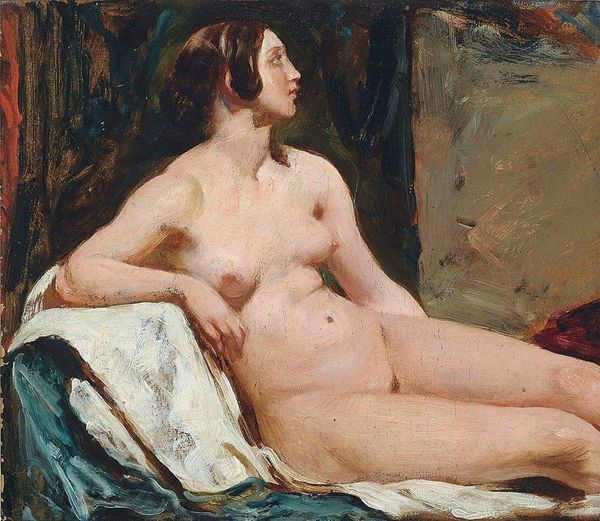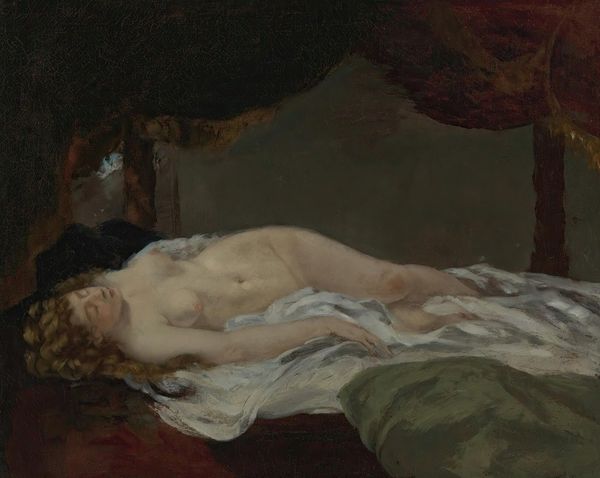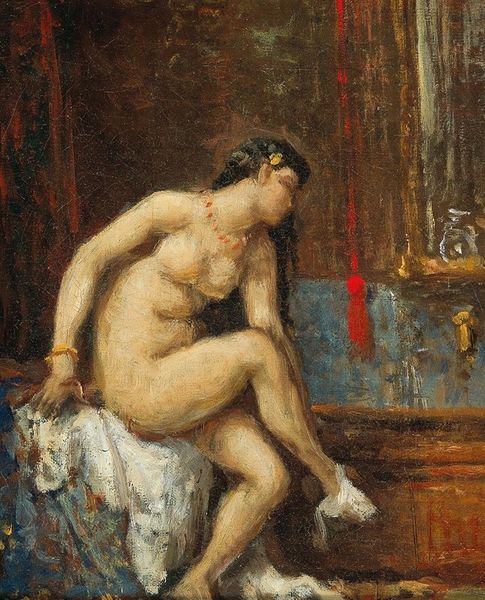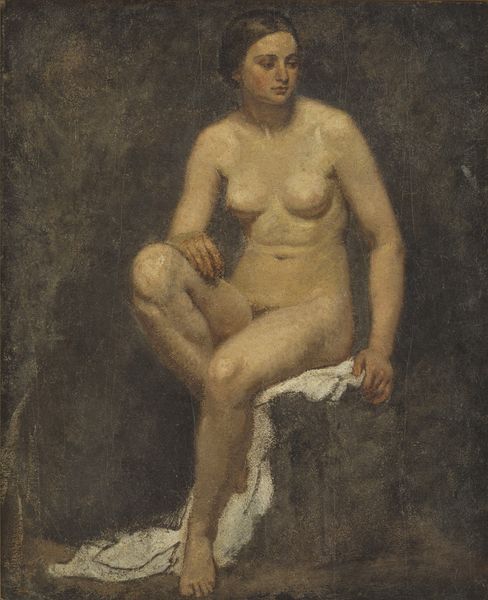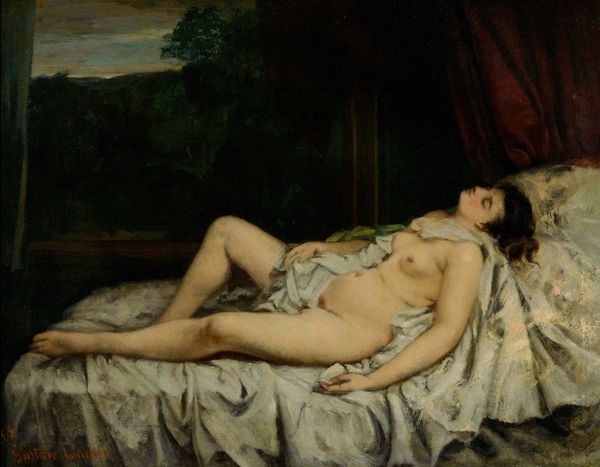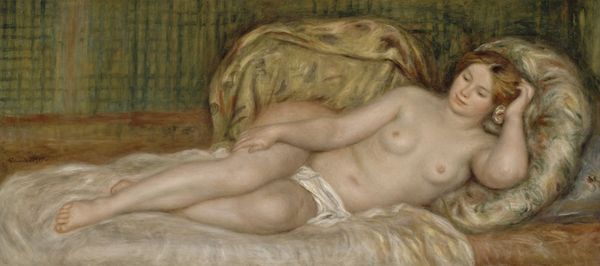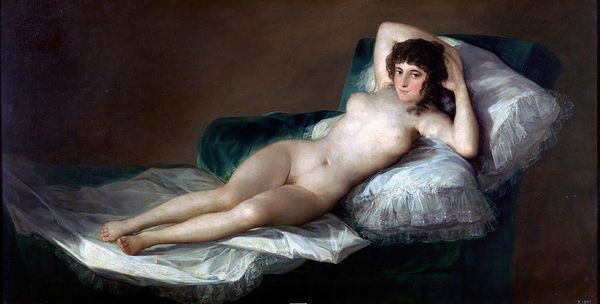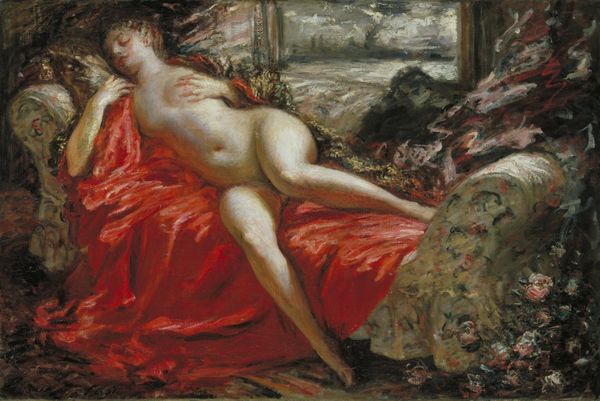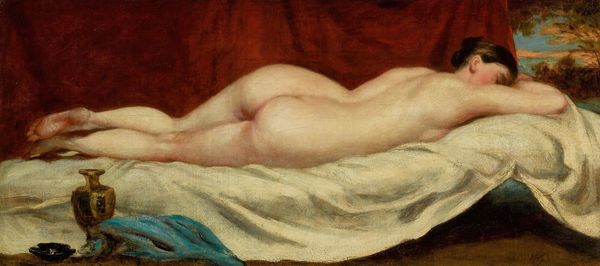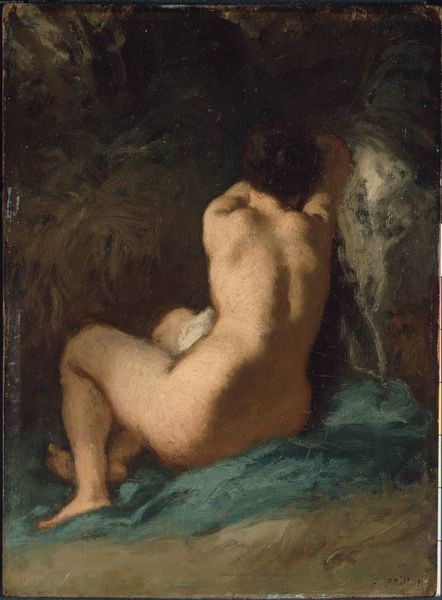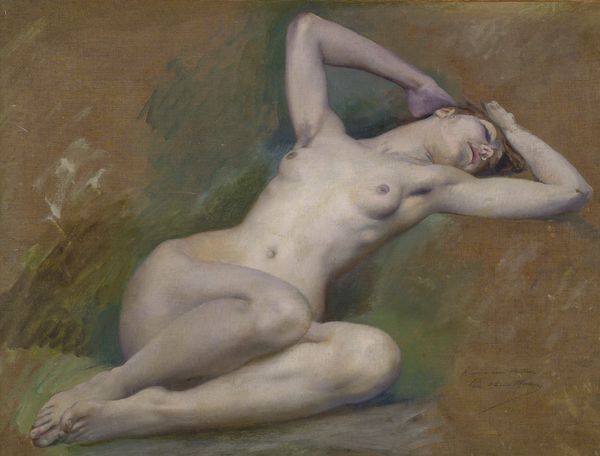
Copyright: Public domain
Curator: This is Rupert Bunny's "Figure study for 'Summer time'", an oil-on-canvas work dating back to 1907. Editor: It feels intimate, almost voyeuristic, with that loose Impressionist brushwork blurring the edges. The dark background really makes her pale skin stand out. Curator: It's intriguing to see this preparatory sketch, especially knowing the title of the final piece. She's seated amidst what seems like draped fabric, a recurring motif of comfort and enclosure that evokes notions of vulnerability and perhaps concealed sensuality. Think of similar motifs in Renaissance paintings; Bunny builds on this legacy. Editor: Absolutely. Notice how Bunny juxtaposes the carefully rendered flesh with those broad, gestural strokes defining the drapery. There's a tension created between detailed observation and pure painterly abstraction. I'm fascinated by the semiotics of the composition. Is this the calm before action? After? Curator: Her averted gaze certainly adds to that ambiguity. She's not quite confronting the viewer, making the work more of a psychological study. Is she a goddess, a nymph, or simply a woman lost in thought? The archetype here is strong, yet complicated by her individuality. There are traces of old master figuration filtered through an impressionist lens. Editor: The ochre and raw umber tones enhance that historical depth you point out. The canvas appears unfinished, intentionally exposing the artist's process, almost daring us to engage with its formal elements without the distraction of a complete narrative. Curator: I find her detachment a refreshing rejection of idealized beauty. The symbolic associations—summer, vulnerability, transition—combine to reveal more than mere physical presence. Editor: Indeed, through line, form, and tone, Bunny constructs a compelling scene open to endless interpretations, inviting us into a visual game of semiotic hide-and-seek. Curator: This figure certainly embodies both a fleeting moment and enduring themes. Editor: It's a truly thought-provoking intersection of academic tradition and nascent modernism.
Comments
No comments
Be the first to comment and join the conversation on the ultimate creative platform.
